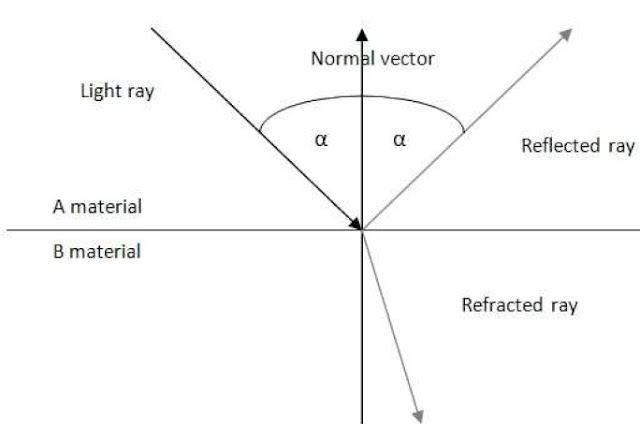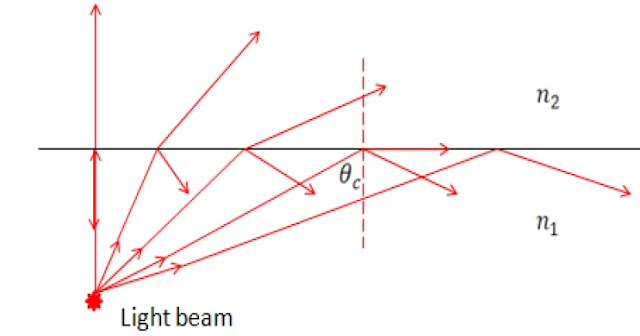Fundamentals of Optical Fibers and Communication : We all know that optical fiber is one of the best transmission medium commonly used in data networks. Optical fiber can be defined as the a thin, transparent and flexible glass or plastic, through which light pulses or signals are sent in order to represent data to be transmitted. Throughout this article I will explain all general aspects with which must have take into account in a network of fiber optic transmission.
Optical fiber today compared to earlier times is the most advanced transmission medium and the only one capable of supporting next generation services. As we all know that the main benefits of optical fiber being the last mile are many: high bandwidth, long distance from central to customer, greater resistance to electromagnetic interference, increased security, decreased signal degradation.
What is Optical Fiber
Optical fiber is a medium used for data/signal transmission. Optical fiber widely used in telecommunication for the sending large amounts of data at a great distance and having more bandwidths than other forms of communication.
Highly resistance to electromagnetic interference and because signals travel along them with less losses. Optical fiber transmission mode allows the transport of a multitude of information, used for applications such as broadband Internet, telephone and cable television, through more effective signals than copper wires.
Furthermore, in optical fiber network to assumes elimination of repeaters and optical amplifiers and therefore reduces initial investment, lower power consumption, less space, fewer points of failure. Today everything is possible only due to optical fiber like- broadband applications such as FTTH, FTTB, FTTX and high definition television HDTV) broadcast, broadband Internet access or teleworking.
Basics of Optical Fiber
By now you must have understood why optical fiber is important in telecommunication sector. The basic fact of optical fiber is that it is a dielectric waveguide that operates at optical frequencies and transmits information in the form of light along its axis.
Right now I am going to talk about the facts that make it possible to send the signal through optical fiber, some facts make possible their operation as optical waveguides. Mainly Electromagnetic waves, Refraction and reflection that make optical fiber as a optical waveguides.
Electromagnetic waves
Electromagnetic wave is the propagation of electromagnetic radiation. Waveforms are related to solutions through space and theoretical aspects that support Maxwell's equations. Unlike mechanical waves, electromagnetic waves do not require a material medium to propagate; That is, they can move through a vacuum.
The frequency of electromagnetic waves is within the range of visible light because light waves are Light waves are . Each pulse of light has a single electromagnetic field in diffusion or "mode". Special solutions for Maxwell's equations for different pulses of light are those that determine the propagation of electromagnetic fields in waves through optical fibers.
The distance along the direction of propagation between two points in phase, i.e., points occupying equal positions in the wave. Direct relation between propagation, frequency and wavelength speed. Now we can calculate the speed of an electromagnetic wave is defined as the product of frequency and wavelength:
Vp= λ.f
Below given figure shows the electromagnetic spectrum of light, depending on the wavelength and frequency:
You can understand from the given image of spectrum that visible spectrum, different wavelengths are differentiated by colors. We can see here the visible range is from 350 nm (violet) to 750 nm (red). In a vacuum the speed of a wave is always the same regardless of wavelength, and therefore, it is equal for all wavelengths.
Refraction and reflection
Refraction and reflection play very important in transmission of optical fiber. A beam of light propagates through a homogeneous medium and strikes the surface of another homogeneous medium with different composition, one part of the light is reflected and the other part enters the other medium as a refracted ray, which is not absorbed can be done. On the other hand refraction produces a change in the direction of the beam or beam of light rays entering the medium with different diffusion speeds.
The incident light beam on another medium with a different composition or transmission speed of light is divided into two beams: one is reflected in the first medium, and the other is refracted by crossing the edge.
The law of reflection states that when a light beam strikes the boundary between two homogeneous and isotropic transparent mediums, part of the incident beam is reflected at the same angle and the other part is transmitted to another medium. Snell's law is other important law to understand the operation of the light guided within the fiber. Index of refraction as the relation between the speed of light in a vacuum and the speed of light in that medium- n= C/Vp
Another important concept that must be kept in mind to guide light within the fiber is total internal reflection, which is based on the law of reflection. The total internal reflectance phenomenon occurs when, in refraction, the incident angle is greater than the critical angle, and therefore all light is reflected.
Operating principles of optical fibers
To create the possible transmission of data through optical fibers, it is necessary to inject a light beam from a light source (usually LED or laser) into a single fiber. The incoming light pulses enter the fiber core, and pass through it to bounce off the walls that surround the core. This is possible because there is a refractive index difference between the core and the cladding, and because the refractive index of the coating is lower than the core. Finally, light rays reach the opposite end of the fiber, reaching the receiver and they are converted into electrical signals.
The theory of operation of optical fiber is based on total internal reflection, The transmitter emits rays of light at an angle of incidence comparable to the critical rays so that the transmitted beam is first reflected in the coating. The same process is repeated again and again through the entire cable.
Since the angle of incidence and reflection are the same, some beams continue to be reflected and transmitted in a zigzag pattern through the entire length of the fiber. However, not all beams of light from the power source enter the core, or they enter but cannot be transmitted through internal reflections in the fiber.
The reason for this is that the light collides with the interfaced core cladding, making it with an angle less than the critical angle, losing that energy in the coating by refraction.
Propagation through optical fiber based on Snell’s law:
Incident angles on the fiber core are different, which holds that n1 > n2. Check from left to right, the first three rays have a lower incidence angle than the critical angle, so that the beam is removed at the cladding, losing energy at the core of the fiber.
The fourth beam has an incidence angle that is equal to the critical angle, so the event of total internal reflection occurs for the first time but diffuses energy over the boundaries. The fifth ray, whose one angle is greater than the critical angle, follows the law of total reflection for the remainder confined to the core.
If we assume that all light rays are impure at an angle above the critical angle, then it is trapped inside the nucleus, a virtual cone is generated and is called a cone of acceptance. Therefore, not all rays applied to the fiber outside the cone of acceptance allow it to propagate for a long time. This can be depicted as follows:
The larger the cone of acceptance of an optical fiber, the greater the amount of rays that can be transmitted by such mediums, and therefore should not be so precise at the time of transmitter emitting light. In addition, there is a large number of light inside the fiber, it involves variations in the direction of propagation of rays, and their quality decreases.
Composition and geometry of Optical Fiber
Fiber optic cable is manufactured from various materials to achieve the effect described above and to adapt to the installation environment. Thus, external cables must be strong, weatherproof, and resistant to ultraviolet radiation (UV) and maximum temperature variation that can occur throughout their lifetime.
On the other hand, internal cables must be strong and flexible, with the required degree of fire resistance or smoke emission. The most common components used for optical fiber are: polyethylene, polyvinyl chloride (PVC), polyurethane, and polyfluorinated hydrocarbons, ethylene vinyl acetate, steel shell, torn wires, central members, and other materials for interstitial filling.
An optical cable consists of a set of generic elements present in any cable, regardless of structure and structure. It can present optical cable as a structure consisting of six concentric layers:
Optical Fiber: This layer is made up of optical fiber responsible for the transmission of data / signals.
Secondary Protection: This layer mechanically protected that usually is loose or
dense, with interstitial filler.
Traction element: This layer is made up of typically Aramid, Kevlar or fiberglass.
Protective inner cover: This layer made of PE, PVC or polyurethane.
Protective shell: This is usually steel.
Protective outer jacket: This layer is made up of PE, PVC, polyurethane or fluoropolymer.
Last Word
Dear friends, this article provides information about optical fiber in great detail. I hope you will be satisfied with the basic information given about optical fiber. Tell me how you all liked this article and please comment on this article "Fundamentals of Optical Fibers and Communication".










2 Comments
Nice post, getting FULL Information at one place its really good,, !!! Planet most love music app mp3 juice get here thanks ....
ReplyDeleteNice post, getting FULL Information at one place its really good,, !!! Planet most love music app mp3 juice get here thanks ....
Today man utilizes Telegraph, Radio, Television, Telephone, Fax, Mobile, Videophone, Pager and so forth, through telecommunication, message can be sent as words. For instance: If you need to communicate something specific "Cheerful Birthday" to your companion. Best walkie talkie
ReplyDelete